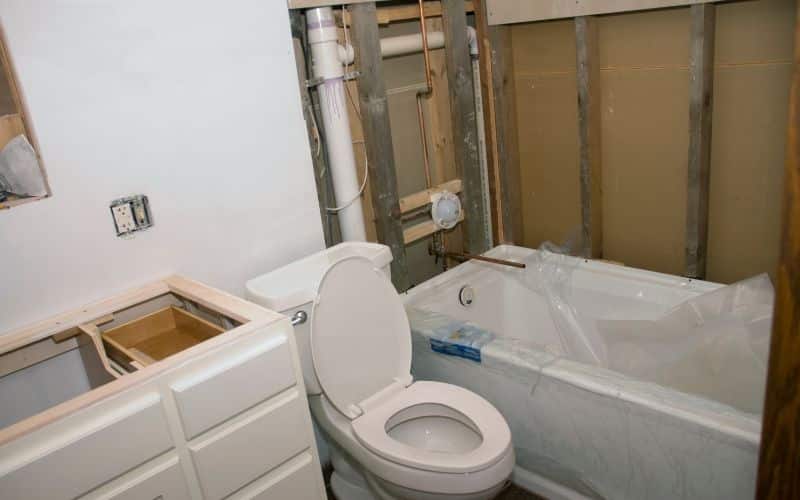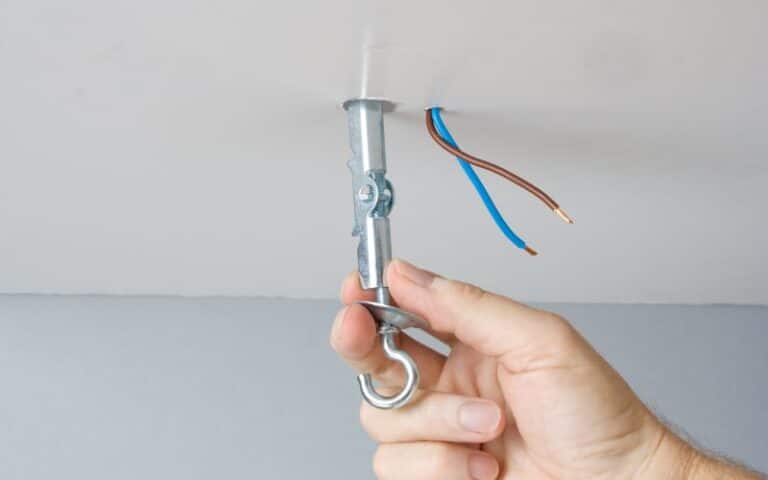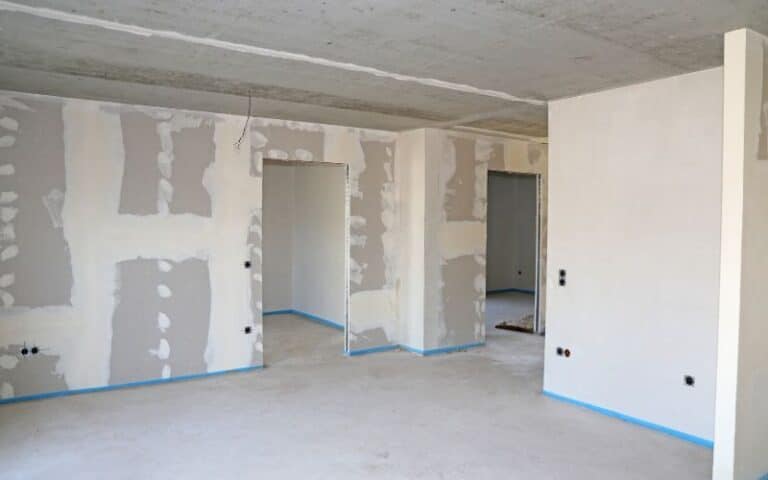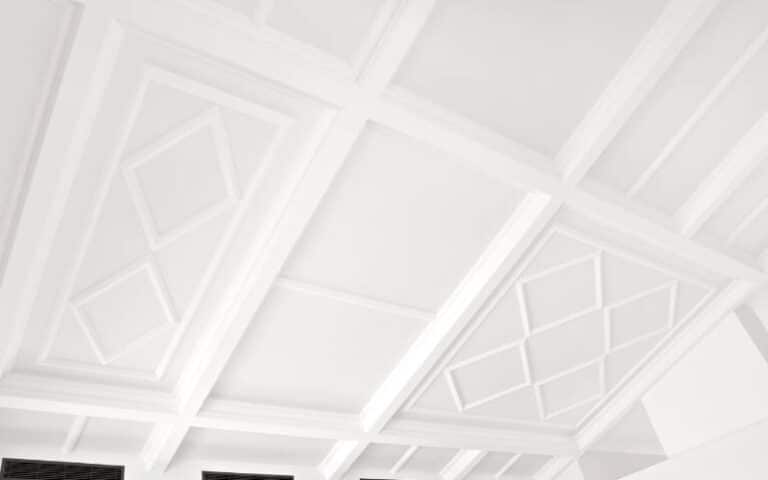Drywall is a commonly used building material for quality walls and ceilings in many buildings.
However, the bathroom ceiling is one area you easily need to remember during construction. Meanwhile, the bathroom requires more attention than other rooms.
Thus, different areas in a home will require a specific type of drywall. Some rooms are moister than others, so can you use regular drywall in a bathroom ceiling?
You can use regular drywall in the bathroom ceiling if you coat it with a waterproof paint or fiberglass-reinforced plastic finish. Regular drywall will form molds and will deteriorate in humid areas. However, moisture/mold-resistant drywall, such as purple or paperless, helps protect the ceiling.
Read to the end, as this article explains in-depth what you need to know about using drywall on bathroom ceilings. Also, you’ll get to know what kind of drywall to use on bathroom ceilings.
By the end, you’ll know the best materials to use in a bathroom ceiling and how to make regular drywall waterproof.
Ready for a Drywall Quiz?
Can I Use Normal Drywall on the Bathroom Ceiling?

Yes, you can use normal drywall on the bathroom ceiling. But paint it with waterproof paint or quality fiberglass reinforced plastic finishing.
Furthermore, instead of coating your regular drywall to protect your bathroom ceiling, use moisture/mold-resistant drywall.
Although it may seem impossible for water to reach the ceiling in your bathroom, that’s true. But, during usage, the bathroom ceiling has a high risk of moisture exposure.
You spend more hours in the bathroom than in other rooms, and it gets more humid. So as you frequently use the bathroom, you also expose the ceiling to moisture.
Also, regular drywall is not waterproof or resistant, which leads to mold formation and gradual deterioration.
There are many reasons to use MMR (mold/moist/mildew resistance) drywalls, but the most important reason is your health.
Molds and other harmful bacteria will tend to grow in areas like the bathroom. And using regular drywall will encourage the growth of these bacteria and mold.
However, molds can be toxic and dangerous to anyone, especially young children and aged adults. This is because molds target the immune system by producing toxins and allergens.
Also, respiratory problems such as asthma are mold and bacteria effects. So use the right drywall and save yourself from extra expenses.
Above all, using drywalls generally on a bathroom ceiling is not ideal. However, drywall on the bathroom ceiling depends on how much moisture you expose it to or the room’s ventilation.
And your ventilation and how humid the bathroom is will determine how fast a drywall will last.
What Kind of Drywall Do You Use in a Bathroom Ceiling?
The type of drywall used in a bathroom is resistant to moisture, mildew, and mold growth. A recommended drywall type to use in a bathroom ceiling is Purple drywall.
However, the Green board is a common drywall type most building codes will recommend for areas in the building prone to moisture.
Nevertheless, bathrooms are less humid, so a green board is ideal. But the purple drywall is better for both bathroom ceilings and walls.
Generally, you can differentiate drywall types by their functions and materials in them. But the coating colors determine moisture-resistant drywalls, which are;
- Green board drywall
- Blue board drywall
- Purple board drywall
- Paperless drywall
#1. Green Board Drywall
Green drywalls are a drywall type, with a paper facing having an outer wax coating that makes it mold/moisture resistant.
The green-colored wax coating makes it more resistible in moist areas than normal drywalls. But the drywall is more effective on other walls than the bathroom.
#2. Blue Board Drywall
The blue drywall is blue in appearance with a wax coating for moisture resistance.
However, this drywall is more resistant to moisture and mold than green board drywall.
A downside to this drywall is that it doesn’t accept mudding, tapping, or painting. Nevertheless, blue drywall is an excellent choice for your bathroom.
#3. Purple Board Drywall
Purple board drywall has the same attributes and functions as other drywalls. But it is the best choice for areas like the bathroom that deal with water usage.
Purple drywall has higher moisture resistance and is even suitable for areas with high humidity. However, you can say the purple drywall is waterproof.
#4. Paperless Drywall
Paperless drywall is regular drywall with fiberglass coating rather than a paper coating, as the name implies.
Furthermore, paperless drywall is the new generation type of drywall, as they’re eliminating the relevance of paper drywalls.
Paperless drywall has more benefits than regular drywall or moisture-resistant drywall. Firstly, its paperless nature makes it less prone to mold growth.
And secondly, paperless drywall is more quality than regular drywall.
However, one of the top brands with mold/moisture-resistant includes the mold rigid from USG.
Nevertheless, improper installation of MMR drywalls, like the green board drywall, can be a bad deal for bathroom ceilings.
A downside of green board drywall is that it can trap moisture easily. On the other hand, its installation also has a high chance of failure.
Nevertheless, let’s see the pros and cons of using moist/mold-resistant drywall below.
| Pros | Cons |
| They are resistant to moisture and mold. | They’re not waterproof. |
| They’re easy to install. | They’re not entirely resistant to mold growth. |
| They are easy to repair. | They’re more expensive than regular drywall. |
| They are also fire-resistant. | Exposure to high temperatures(above 120°) and run down of water can cause damage. |
However, using regular drywall and painting it with a water-resistant paint finish is another good option.
What Are the Best Materials for Bathroom Ceilings?
The best materials for bathroom ceilings are waterproof or resistant to moisture and mold.
However, below is a list of the five best materials for bathroom ceilings.
- PVC ceiling panel
- Glass false ceiling
- Metal ceilings tiles
- Paint
- Acrylic sheets
#1. PVC Ceiling Panel
You can refer to the PVC panel as the best choice for any bathroom ceiling and walls.
The PVC ceiling panel’s benefits range from the fact that it’s completely water-resistant, easy to fix and maintain, and lasts long.
#2. Glass False Ceiling
Glass false is a non-crystalline glass that is better and less expensive than regular glass for your bathroom ceiling.
However, this glass material’s overall benefit is its aesthetics to your bathroom. They are good insulators.
#3. Metal Ceilings Tiles
This material may seem a bit off and technical to use, but that’s just you judging the book by its cover. They are one of the easiest ceiling materials to use and maintain.
Unlike wall tiles, metal ceiling tiles are lightweight, have waterproof material, and are easy to install and remove.
#4. Paint
Paint is a good material for bathroom ceilings with existing ceilings. Although most paints are subject to mold growth, you need one that’s resistant to moisture.
However, you’ll need glittering paints for bathroom ceilings. And below are good options to choose from;
- Quality High-gloss or Semi-gloss Paint
- Satin paint
- Acrylic eggshell
#1. Quality High-Gloss or Semi-Gloss Paint
High-gloss paint is an excellent material to deal with moisture problems on bathroom walls, ceilings, etc. Also, gloss is a material that is good at repelling moisture.
Although, a disadvantage to this product is the fact that it’s more expensive than other interior paint alternatives.
#2. Satin Paint
Satin is another fantastic paint recommendation for your bathroom ceiling and wall. Also, satin is Hoosier than acrylic eggshell paint but less than semi-gloss paint.
#3. Acrylic Eggshell Paint
Acrylic eggshell is an alternate choice to gloss paints and is also moisture-resistant. And one quality of the eggshell is that you can easily wash/scrub it.
#5. Acrylic Sheets
Acrylic sheets are well-known materials for bathroom ceilings in different designs and shades. And they are highly waterproof.
Acrylic material is durable and excellent in appearance. However, you can easily clean and maintain it.
Choosing the best materials for bathroom ceilings will depend on certain factors. For example, the bathroom’s decoration and ventilation will determine the required materials.
Also, a bathroom with a shower inside will require different materials for the ceiling. And a bathroom with a bathtub will require other materials for its ceiling.
Also, various building codes recommend materials to use in your bathroom. So, do check your local home improvement stores for available recommendations.
Can You Waterproof Regular Drywall?
Yes, you can waterproof regular drywall. In addition, you can apply certain waterproof or water-resistant materials as finishing to your drywall.
Firstly, you can use good fiberglass-reinforced plastic panels to make regular drywall waterproof.
Water-resistant paint is also a good option. For example, after applying drywall to walls or ceilings, use glossy paints as finishing.
Glossy paints are durable and reliable for repelling moisture and making regular drywall moisture-resistant.
Equally important, ensure that the local building department approves before using waterproof drywall in your home.
For safety purposes, some places restrict the use of waterproof drywalls in case of fire outbreaks. The restriction is mostly against using MMR on ceilings.
Lastly, good ventilation is the best option to optimize the moisture-resistivity or waterproofing of drywall in some humid regions.
Install vent fans and learn to open available windows to ventilate the room and reduce high humidity.






